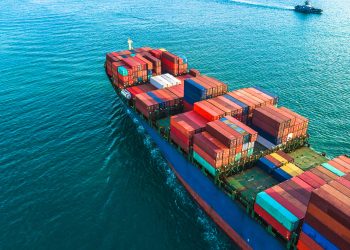New equipment and expertise are needed
 As the global container fleet continues to expand in both vessel size and overall capacity the need for specialized equipment and expertise grows as well, as port facilities move to update cranes and procedures to accommodate the bigger ships and greater productivity requirements.
As the global container fleet continues to expand in both vessel size and overall capacity the need for specialized equipment and expertise grows as well, as port facilities move to update cranes and procedures to accommodate the bigger ships and greater productivity requirements.
According to shipping industry analysts Alphaliner, as of the middle of August, 133 new containerships had been delivered entered into service in 2011, bringing the global containership fleet to over 4,900 vessels, representing 15 million TEUs of capacity. Another 659 container vessels, representing another 4.5 million TEUs, are yet awaiting delivery.
“The vessels themselves are just one factor in the global shipping industry” observed Halfdan Ross, Managing Director of Crane & Engineering Services in Shanghai, noting that “without the proper equipment – that is cranes – the productivity potential of the expensive new larger vessels cannot be properly utilized – and those larger ships cost nearly $200 million each so the need to make every minute count is compelling”.
The introduction of Ultra-Large Container Ships of over 10,000 TEU capacity is changing the economics of the industry, and putting new pressure on terminals to be able to not only provide deep enough draft, but also tall enough cranes with sufficient reach to span the up to 23-container wide giants.
Vessels of 10,000 TEU capacity and above account for nearly a quarter of all vessels awaiting delivery with 159 currently on order. Another 111 vessels of between 7,500 and 9,999 TEUs will also be delivered over the next few years, and by the end of 2014 more than half of the world’s container fleet will be comprised of vessels of 5,100 TEU capacity and above, up from 40% at the end of 2010.
Ports and terminals will have to invest in new and larger cranes to accommodate these vessels not only among the world’s major load ports and transshipment hubs where the largest vessels will be calling, but also at regional and locally-oriented facilities where vessels currently in service on Transpacific and Transatlantic will cascade down to “North-South” routes as they are replaced by the newest containerships entering service on the East-West trade lanes.
The need for experience and expertise in STS crane design, manufacture and installation, as well as inspection and maintenance training and performance will become an increasingly larger part of terminal operations’ financial equation.
“The largest STS cranes represent an investment of about USD 8 million each and equipment life-cycles and down-time become even more important cost factors of terminal profitability and productivity” noted Mr. Ross.
“In 2010 there were about 4,900 STS cranes operating around the world, with just over 1,000 capable of a greater than 22-container reach or more, and half of them of in the Far East, but in all of Africa there are just 199 STS Cranes of Panamax size or above, 143 in all of South Asia, and 138 in all of South America; clearly this is a situation which will have to be addressed, and quickly”, said Mr. Ross.
Source: APM Terminals





























































